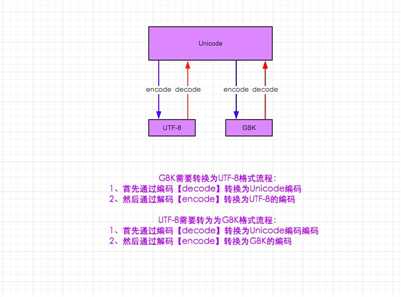详细文章:
http://www.cnblogs.com/yuanchenqi/articles/5956943.html
http://www.diveintopython3.net/strings.html
需知:
1.在python2默认编码是ASCII, python3里默认是unicode
2.unicode 分为 utf-32(占4个字节),utf-16(占两个字节),utf-8(占1-4个字节), so utf-16就是现在最常用的unicode版本, 不过在文件里存的还是utf-8,因为utf8省空间
3.在py3中encode,在转码的同时还会把string 变成bytes类型,decode在解码的同时还会把bytes变回string

上图仅适用于py2
#-*-coding:utf-8-*- __author__ = ‘Alex Li‘ import sys print(sys.getdefaultencoding()) msg = "我爱北京天安门" msg_gb2312 = msg.decode("utf-8").encode("gb2312") gb2312_to_gbk = msg_gb2312.decode("gbk").encode("gbk") print(msg) print(msg_gb2312) print(gb2312_to_gbk) in python2
python3
#-*-coding:gb2312 -*- #这个也可以去掉 __author__ = ‘Alex Li‘ import sys print(sys.getdefaultencoding()) msg = "我爱北京天安门" #msg_gb2312 = msg.decode("utf-8").encode("gb2312") msg_gb2312 = msg.encode("gb2312") #默认就是unicode,不用再decode,喜大普奔 gb2312_to_unicode = msg_gb2312.decode("gb2312") gb2312_to_utf8 = msg_gb2312.decode("gb2312").encode("utf-8") print(msg) print(msg_gb2312) print(gb2312_to_unicode) print(gb2312_to_utf8) in python3
原文:https://www.cnblogs.com/wzy23/p/11438714.html